#gamera 2 attack of legion
Text
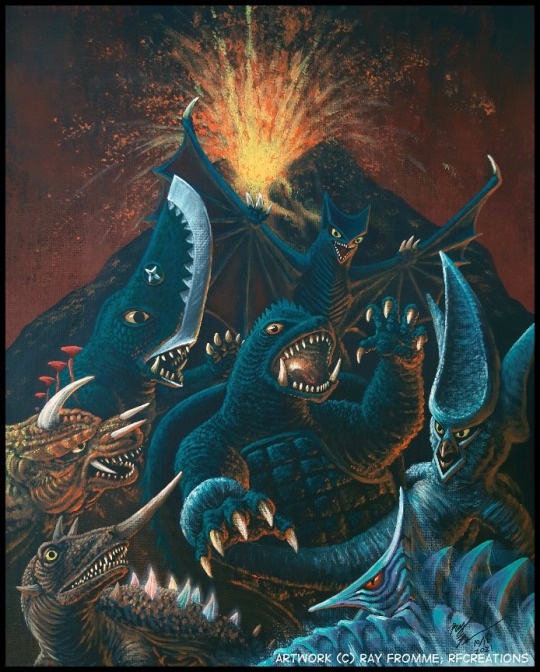

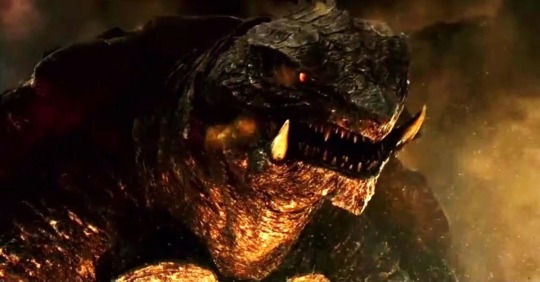
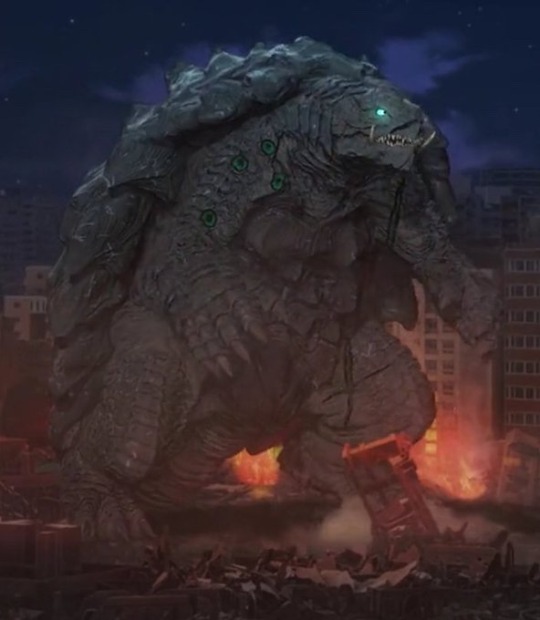
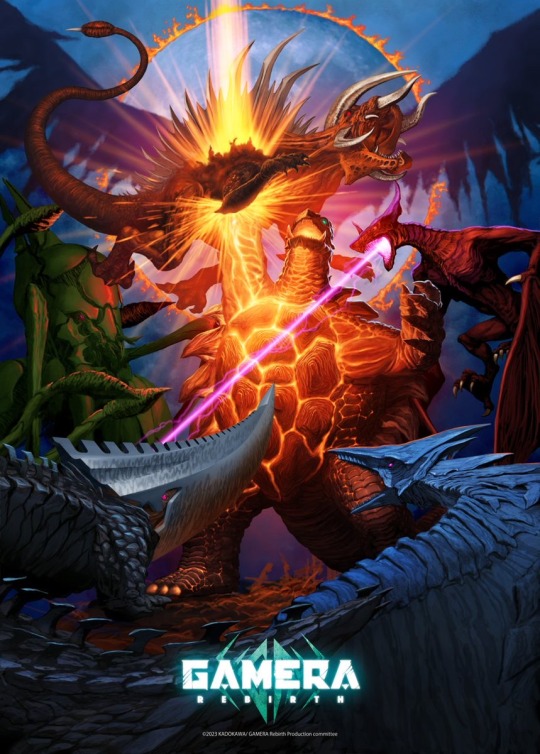

Happy Birthday Gamera [ ガメラ ]
November 27, 1965
Gamera is 58 years old !!! !!!
Earth Defender and friend to all children
From Gamera franchise
#gamera#ガメラ#earth defender#Gamera birthday#Gamera friend to all children#gamera fandom#gamera franchise#gamera the invincible#Gamera 2 attack of Legion#Gamera revenge of Iris#gamera guardian of the universe#gamera the brave#Gamera 2015#gamera rebirth
156 notes
·
View notes
Text

11 notes
·
View notes
Text

GAMERA 2: ATTACK OF LEGION (1996)
22 notes
·
View notes
Text
Ruth Marie Jarman (formerly Ruth Shiraishi), English voice of Mega Man (Mega Man 8) and X (Mega Man X4), as a newscaster in Gamera 2: Attack of Legion.
#Ruth Marie Jarman#Gamera#Gamera 2#Attack of Legion#I only found out about this today and thought it was really cool#She's my favourite voice of Mega Man
32 notes
·
View notes
Text
Now watching:

#Gamera 2: Attack of Legion#kaiju#kaiju summer#shusuke kaneko#toshiyuki nagashima#miki mizuno#tamotsu ishiibashi#mitsuru fukikoshi#ayako fujitani#gamera#legion
7 notes
·
View notes
Text






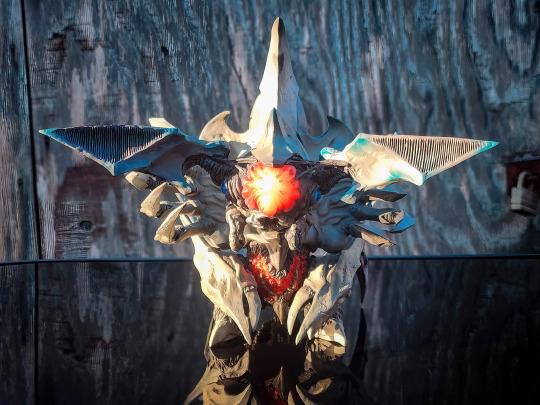





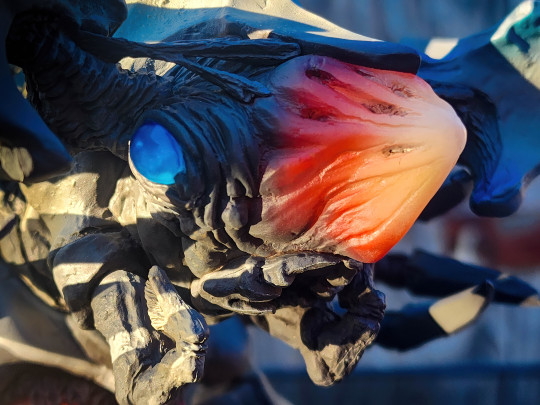
LEGION
SHONEN-RIC EXCLUSIVE DEFOREAL
#GAMERA#GAMERA 2#LEGION#ADVENT OF LEGION#ATTACK OF LEGION#DEFOREAL#EXLCLUSIVE#JAPAN#IMPORT#GODZILLA#PHOTOGRAPHY#TOY PHOTOGRAPHY#COLLECTION#HOBBY#EXTRA HEAD#KADOKAWA#DAIE#MERCH
34 notes
·
View notes
Text
Haven’t seen the Heisei Era Gamera trilogy in so long! Glad to see they’re all on Prime!
#gamera: guardian of the universe#gamera: advent of legion#gamera 2: advent of legion#gamera 2: attack of the legion#gamera: revenge of iris#gamera 3: revenge of iris
0 notes
Photo

Out of what uncolored kaiju pictures I have, Legion must be the laziest option given that the dominant color is bone white. I could just about just add some more shadows and call it done honestly, but I wanted to do something a bit better than that, so I tried to add in some stuff like a bit of the swarm and some effects.Wonder if there's any chance of the swarm and Legion queen getting an appearance in rebirth? I'm personally thinking the odds are low, but I'd be happy to be wrong.
1 note
·
View note
Text
YET ANOTHER KAIJU FILM REC LIST
(Selected and arranged to account for modern tastes, as well as to highlight specific wants for fans of Godzilla: Minus One and/or Godzilla x Kong: The New Empire)
Notes:
Titles can be confusing, when in doubt differentiate films by year of release
"Showa" generally refers to films made from 1954-1980, while "Heisei" generally refers to films made from 1984-2006, with "Millennium" being a specific series of Godzilla films made from 1999-2004, within the Heisei era (the actual notation refers to the Japanese Emperor, but this is slightly offset with how it's used for kaiju films)
I've tried to list where the films can be watched, for free if possible, but this can change at a moment's notice (for instance, the TokuSHOUTsu Youtube channel currently has a livestream of almost all the Showa Godzilla films and one for the MST3K episodes featuring 6 Showa Gamera films and Gorgo, but I have no idea how long those will stay up)
More context and history about the kaiju film genre can be found at the end of the post
GROUP 1: EVERYONE
These films are the peers and equals of Minus One and GxK, in only the best respects.

The Gamera Heisei Trilogy - Gamera: Guardian of the Universe (1995), Gamera 2: Attack/Advent of Legion (1996), and Gamera 3: Revenge/Awakening of Iris (1999)
I would recommend this trilogy to ANYONE - even those hesitant to watch anything that isn't CGI, or that still don't think kaiju films can be good cinema. No matter what you're looking for in a kaiju film - engaging monster action, compelling human drama, deep metaphorical significance, fun action-adventure, hard sci-fi, spiritual eastern fantasy - these three movies are bound to be among the best at it. They're nearly unanimously praised as some of the best kaiju films of all time, and are the ONLY classic films with that honor that can visually compete with modern tastes in special effects.
Among the three: Guardian of the Universe is probably the closest analog to GxK, a fun action-adventure film about a girl who communicates with a giant monster. Revenge of Iris is closer to Minus One, introducing a darker mirror of the first film's story that invokes trauma and loss to great emotional impact. Which all leaves Advent of Legion in the middle, as a fairly formulaic but well-executed sci-fi alien invasion story.
These films are available free and subtitled on Tubi, or free and dubbed on Pluto. In a rarity, the dubs are done with love and care by fans of the genre and while they may not be the best way to watch the films, they're fairly decent.
GROUP 2: MODERN/NICHE
These films either excellently or acceptably compete with modern visual effects, but in other areas, are ultimately more dependent upon viewer tolerances and niche interests.
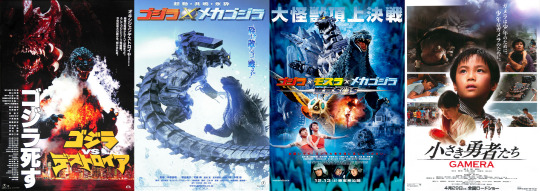
Godzilla vs. Destoroyah (1995)
If you want to cry about Godzilla, this is it, this is the movie. Possibly the classic film that delves the deepest into the idea of kaiju as sympathetic, tragic beings, this film leans heavily into hard sci-fi and features a kaiju opponent inspired by the titular creature from the Alien franchise. It's the seventh film in the Godzilla Heisei series, but as most of the previous films are currently stuck behind rights issues and difficult to find, I'd recommend jumping into this one as a standalone (or, if anything, watch the original 1954 Godzilla film first, but if that doesn't interest you it's not necessary). This movie is readily available for free, subtitled on Pluto or dubbed on Youtube.
The Kiryu Duology - Godzilla Against Mechagodzilla (2002) and Godzilla: Tokyo S.O.S. (2003)
These two films face a number of pacing and production issues, and due to scheduling conflicts, the main heroine, mech pilot Akane from the first film (arguably one of the most compelling human characters in the entire Godzilla series), was unable to return for the sequel beyond a brief cameo. But despite feeling unfinished, not all the emotional weight of this duology is lost. The ethics-focused, techno-spiritual story being told still packs a punch, and visually, out of the entire suitmation era this is the best Godzilla, Mothra, and Mechagodzilla have ever looked on-screen. If first checking out the original 1954 Godzilla and the 1961 Mothra interests you at all, it may enhance the viewing experience, but if not, dive right in! Both these films are free on Pluto TV, but do keep in mind Against Mechagodzilla is the dubbed version.
Gamera the Brave (2006)
I've said it before, but this is the movie that most closely reminds me of Minus One, with its modern filmmaking style, deep emotional themes, and in particular, having a bright and hopeful appeal to humanity in a genre where many of the more serious films are tragedies. Personally I rank this one right up there with the 90s Gamera trilogy, if not even higher, but to appreciate it, you really do have to be here for a children's fantasy film with more charm and heart than fast-paced kaiju action. This film is free on Tubi, subtitled.
GROUP 3: CLASSIC
These films require a tolerance for the special effects of the 1950s through 1970s, which I realize some modern audiences may find difficult to appreciate, but are otherwise highly recommended.
All four of these films are available free and subtitled on Pluto through Criterion, and are additionally part of SHOUT! Factory's catalogue and playing on the livestream.

Godzilla (1954)
If you've seem Minus One or Shin Godzilla, the obvious route is, of course, to go back to 1954 and experience the original cinematic masterpiece of Godzilla as a nuclear horror. The one caveat I'll mention is that a lot of Minus One's effectiveness is in subverting one theme present in the original, so this will, in a way, feel like a step backward thematically.
Ebirah, Horror of the Deep (1966)
The outright most comparable classic film to GxK - a fun island adventure film wherein various entertaining personalities are shipwrecked and must work together to thwart human baddies and even recruit the help of Godzilla! This is one of my personal favorites, and while Mothra only appears briefly in the film, it expands on her lore quite a bit.
Godzilla vs. Hedorah (1971)
This film is wacky, resembling an abstract art house film at times, but in many ways is a revisitation upon the dark, deep metaphors of the original, this time warning of the dangers of pollution through a truly terrifying monstrosity that gives Godzilla one of the most brutal fights of his career.
Terror of Mechagodzilla (1975)
Along with the original and Hedorah, this completes a trio of more dark and serious Showa era Godzilla films. It's the only Godzilla movie of its era to be written entirely (not co-written) by a woman, tells a dark and tragic tale, and yet is the height of 1970s superhero Godzilla as he takes on two powerful opponents at once.
GROUP 4: GRAB BAG
I'll throw in four more: these are just some of my personal recommendations and favorites that don't fit neatly into the other categories.
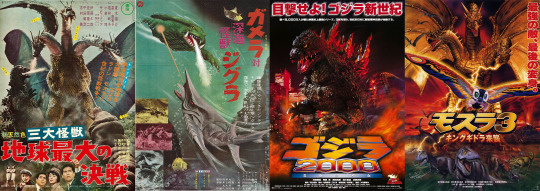
Ghidorah, the Three-Headed Monster (1964)
The original and archetypical "multiple monsters team up to fight a greater threat" movie. This one is consistently on the edge of being called an objectively good film, but can be considered too cheesy and campy to make the cut. Nonetheless, it's a fun time, and it's also pretty much the only classic film where Godzilla and Mothra interact positively, if that's appealing to you. Like the other Showa Godzilla films, it's free through Pluto and SHOUT! Factory.
Gamera vs. Zigra (1971)
I really just wanted to put a Showa Gamera here, and this is one of my favorites. Just the campy, wacky, good time that is Showa Gamera, with a side of ocean theming - this extremely cheap film was partly funded through Kamogawa Sea World, which is the primary location featured in the film. It's free on Tubi along with the other Gamera films, and also makes a great MST3K episode, even if the version of the film used there is very low-resolution and the underwater scenes in particular suffer a little.
Godzilla 2000: Millennium (1999)
Somewhat unique among its contemporaries for being a 2000s era film that features Godzilla as more-or-less the protagonist, with human characters that advocate for understanding and respecting him. It's an incredibly cinematic film - I would describe its special effects as ambitious, not always effective, but regardless it would be a great intro for new fans if it were more accessible. Currently, it's tough to track down, but another rare case where the heavily-edited US dubbed version is perfectly acceptable, and even sometimes considered superior to the original.
Rebirth of Mothra 3 (1998) and to an extent, the whole trilogy.
I unashamedly love these oft-maligned films that are actually very comparable to the Heisei Gamera trilogy... in all respects but objective quality. Fun fantasy kaiju films featuring tiny women who fight each other with swords and flying mounts, while a superpowered giant moth beats up two space dragons and takes a break in the middle to beat up a genetically-engineered dragon. Lots of rainbows and lasers, and a vague, underlying exploration of the conflict between those with peaceful methods and those with violent methods without completely villainizing either side. If any of that sounds interesting, check these films out, they're currently readily available free on Pluto after a long history of the third and most serious/mature film being extremely rare and seldom-seen.
FURTHER NOTES AND CONTEXT:
Inspired by western giant monster films like King Kong and The Beast from 20,000 Fathoms, and the summation of Japan's nuclear fear and trauma, the original Godzilla film in 1954 was a runaway success, beginning the kaiju genre as production company Toho ordered not only a direct sequel, but a broad scope of special effects films that ultimately gave us other classic kaiju like Mothra and Rodan.
In the 1950s and 1960s, the concept of a "Godzilla series" did not yet exist - Toho just made science fiction films, wherein some of them featured kaiju, and some of those, but not all, featured Godzilla. Many of these films were very loosely, and sometimes only retroactively, considered to be in the same universe or cinematic canon, creating situations where kaiju like Manda and Baragon would wander into Godzilla films after getting their start in non-Godzilla adventures like Atragon (1963) and Frankenstein vs. Baragon (1965). (An example of a non-kaiju Toho film I would highly recommend is 1958's H-Man)
The 1960s also saw a "Kaiju Boom," where the genre was expanded beyond Toho to other studios in Japan and even to other countries. This brought about a number of new kaiju projects like Gorgo (1961), Reptilicus (1961), and Yongary, Monster from the Deep (1967). The only of these films to be successful enough to spawn a series was Gamera (1965), from Daiei studios in Japan, and there were 7 Gamera films made from the mid-60s to early 70s. (Daiei has their own catalogue of Toku effects films, and also produced the kaiju-adjacent Daimajin trilogy (1966), period pieces set in ancient Japan about a giant warrior statue that comes to life)
Interest in kaiju films began to wane in the 1970s, and Toho largely narrowed its focus to a yearly Godzilla series with lower and lower budgeting. Godzilla vs. Megalon (1973) was the most cheeply-made of these, but several factors made it the most widely-known film in the US and solidified the genre's "rubber suits and cardboard buildings" reputation among the general public for the next 50 years. Also in 1973, Toho produced the giant hero television series Zone Fighter, where Godzilla, King Ghidorah, and Gigan appear in several episodes. The series was made to compete with Ultraman and other television-based Tokusatsu, which was swaying audiences away from films at the time. (I personally know very little about Ultraman and other costumed hero Toku, but I know there are many experts on here who could answer questions about those)
Toho continued to make science fiction and effects films throughout the late 70s and 1980s, such as The War in Space (1977), but kaiju films were out of fashion. Gamera had a brief pseudo-revival in 1980, but otherwise it was a long drought from 1975 to 1984, when Toho began the Godzilla Heisei series: a series of seven films that continued in 1989 and picked up to a film per yer from 1991 to 1995. These films featured more strict continuity and the recurring character of Miki Saegusa, marking one of the first steps away from the previous practice of switching out the human cast entirely from film to film.
In the late 90s, Godzilla was absent yet again, as Toho made the rights handoff to Sony for the 1998 American film. In his place were the competing late 90s Gamera and Mothra trilogies, both relatively unique in featuring multiple recurring cast members and worlds that blended sci-fi and fantasy elements. In America, the poorly-received GODZILLA (1998) spawned a more warmly-recieved animated continuation in Godzilla: the Series (1998-2000).
In response to the critical failure of the 1998 film, Toho craved redemption and launched the Millennium Series: six Godzilla films that, with the exception of the Kiryu Duology, were all standalone in hopes of attaining theatrical releases in the US (only Godzilla 2000 succeeded at this). With a general failure of the 50th anniversary film Godzilla: Final Wars (2004), Toho put Godzilla to rest, seemingly for good. Gamera the Brave in 2006 was the last true suitmation kaiju film, critically acclaimed but also a financial failure.
In the intervening decade, CGI took over, and was the name of the game by the time Pacific Rim (2013), Godzilla (2014), and Shin Godzilla (2016) kicked off the new "Kaiju Renaissance," the present era that includes Reiwa Godzilla and the Monsterverse.
7 notes
·
View notes
Text

This day Gamera 2 Attack Of Legion was released
10 notes
·
View notes
Text




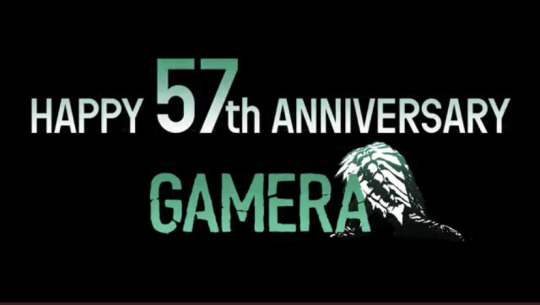
Happy Birthday Gamera [ ガメラ ]
November 27, 1965
Gamera is 57 years old !!! !!!!
Earth Defender and friend to all children
From Gamera franchise
#Gamera#ガメラ#earth defender#Gamera birthday#Gamera friend to all children#gamera fandom#gamera franchise#gamera the invincible#Gamera 2 attack of legion#Gamera revenge of Iris#Gamera guardian of the universe#gamera the brave#Gamera 2015#gamera rebirth
243 notes
·
View notes
Text

Gamera 2: Attack of Legion (1996).
24 notes
·
View notes
Text
Gyaos - is a recurring enemy Kaiji (giant monster ) in the Gamera series of films produced by Daiei film.Gyaos is a Malevolent, bat-like creature with sharp claws , a long neck and a taste for human flesh. it is known for it's ability to fire a powerful sonic beam weapon from its mouth . also Gyaos is one of Gamera's formidable foes.
Habitat of Gyaos
Gyaos are typically portrayed as inhabiting remote and Mountainous areas, such as forests or caves.
Behaviour and Nature
: Gyaos is carnivorous monster that preys on human, animal and other living beings. it driven by a relentless hunger for flesh and actively seeks out prey to feed on.
Appearances :
Gyaos has appeared in multiple films and media within the Gamera series Like Gamera Vs Gyaos (1967) , Gamera Vs Guiron (1969) ,Gamera(Guardian of the universe) 1995, Gamera 2 (Attack of legion ) 1996, Gamera 3 ( revenge of the iris) 1999.




2 notes
·
View notes
Text

Two years after my review of the first Heisei Gamera, it's time to jump back in and talk about the sequel.
Following the success of 1995’s Gamera: Guardian of the Universe, the sequel was put into production soon afterwards, with an announcement made in November of ‘95. Much of the same creative team would return for the sequel, including Shusuke Kaneko in the director's chair, a new screenplay by Kazunori Ito, and Shinji Higuchi once again directing the special effects.
Here’s the thing about Gamera 2’s story; it’s dead simple. I don’t mean that as an insult, but I can sum up the broad strokes by simply calling it a classic B-movie plot. In some ways that’s doing a disservice to the unique and captivating characteristics bestowed upon Legion, but otherwise it’s standard plot paying homage to classic sci-fi, most notably Ultra Q, with beats not dissimilar to the previous Gamera entry. However, much like its predecessor, Gamera 2’s brilliance lies in the presentation. There’s an initially slow yet well paced suspenseful build towards the mysterious creatures, what they are and how they operate, keeping the audience wondering what event will transpire next.

The film starts off in classic fashion with a strange meteor shower and bizarre lights, prompting the JSDF to respond to a particularly large impact creator. Troublingly, there’s no sign of the meteor.

We’re then properly introduced to our main protagonist Midori Honami (Miki Mizuno), a curator for the nearby Sapporo Science Center, who becomes involved with the JSDF’s puzzling case.
Several more bizarre incidents take place, including one of the eeriest scenes as two bumbling security guards witness a strange creature consuming bottles inside a brewery. The only evidence left behind at the scene is silicon, indicating a possible diet for the creature.

Following the brewery incident, multiple underground fiber optics are destroyed, each attack creeping closer to Sapporo until 5 days later a subway is attacked by a number of monsters. Things escalate as Police arrive, which goes about as well as you’d expect. The dread continues to escalate as communications across the region are cut off, and a massive plant erupts from a building above the tunnels.

The JSDF intervenes shortly after, and once they rescue the subway survivors (the attacks upon whom seem random) they begin monitoring the colony and various forms of atmospheric changes, notably, the oxygen levels are rising dramatically, creating a toxic environment.
Honami theorizes that the Legion and the plant are like Leaf-cutter ants colonizing fungus to survive. Ergo, you destroy one, the other will die with it in a symbiotic fashion.
Furthermore, the purpose of the plant is called into question given that it’s not a food source. The more dire theory being that’s how the Legion spreads its colonies. I.e. What crashed in Hokkaido may have been a seed launched from such a plant. As such, the JSDF plans to destroy the structure before it can bloom.
Because the Legion emits electromagnetic waves to communicate, Radios are largely useless in the surrounding area, leading to more basic forms for communications such as Morse Lamp. I find it notable that the film manages to incorporate a “fear of technology” angle without it being the technology itself being demonized or the threat as it often was in mid-late 90s media. Rather it's the loss of modern conveniences in a hyper modern city, it’s a concept that still holds up really well today. Additionally, the Legion see tech as a threat, as it’s discovered the subway victims all had phones, pagers, radios etc. This will be important later on.
Meanwhile, operations with the plant hit a snag; Oxygen levels have risen so dramatically that attempting to destroy the structure could be just as catastrophic as the flower blooming. A smaller explosion is set off which temporarily disrupts the flowing plant and the Legion, allowing radio communication to resume just in time to hear that Gamera has emerged from the sea and is headed towards Sapporo.
Gamera arrives, inhales the excess oxygen, burns the flower, and rips it up by the roots. Thousands of Legion swarm and attack Gamera, who only manages to escape when the fiends are sent into a frenzy by a nearby Transformer.
In the ensuing chaos, a larger winged Queen Legion emerges and escapes.
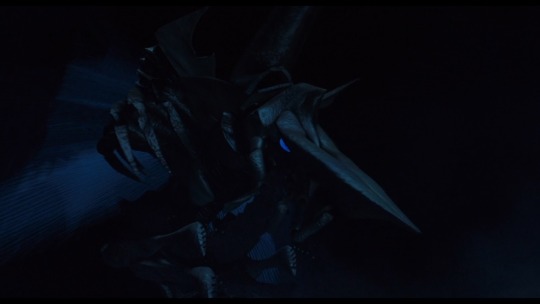
From here on the movie is in full swing. We’re given well needed breathers that keep the film from being suffocating, allowing us to reflect on the events at hand. But the pace is very brisk after Gamera shows up, and we’ve pretty much learned most of the mystery behind Legion, so now it’s about seeing how that knowledge can be applied to defeat them.
The one last truly notable story piece that pops up is Asagi Kusanagi returning from the previous film. She is mentioned early on, showing that her story is known about if not widely believed. She appears a couple more times before finally crossing paths with Honami during an evacuation near an airport, just as a battle between Gamera and a now fully grown Legion Queen breaks out over a second flowering plant.
Asagi still has a connection to Gamera, which is both a great focal point of the film and also probably one of the few things I wish was handled better. As poignant as Kusanagi’s role is in this film, she’s barely featured and quite frankly it feels like more should’ve been done to emphasize her significance. I don’t know if they just couldn’t get Ayako Fujitani for more than they did, but it feels like they didn’t have her for long, as she’s in relatively few scenes.
One thing I do like is that her connection is far weaker than the first film, which makes sense given that it was implied to be severed after Gyaos’ defeat. It’s questionable how much Asagi’s connection even remains, certainly not enough for Gamera’s injuries to reflect upon her as in the past, nor much to aid him in battle. The Legion Queen is victorious in their first fight and she burrows away. Gamera limps his way to the second flowering plant and manages to topple it over, but it still goes off causing a 6 mile explosion and carbonizing an already wounded Gamera.

In the coming days a vigil of sorts would form around Gamera, becoming something of a pilgrimage site for people hoping for Gamera’s revival, even harkening back to the Showa era’s “friend to all children” angle with families visiting the site.

Asagi remains by his side, still acting the role of priestess, and eventually catalyst. The religious parallels become more blatant when the gathering results in a formation of energy that revives Gamera.
However, Asagi’s Magatama breaks apart, unquestionably severing her connection to Gamera, and his to Humanity.

After his revival, Gamera goes off for the climatic battles, a very minor subplot regarding the JSDF’s hesitancy to assist Gamera gets wrapped up when they ultimately fight alongside him against Legion (I can only assume this was a severely downplayed component due to the whole kerfuffle with the JSDF and Godzilla vs. Mothra)
We get a few more character moments for our cast, and Gamera finally decimates the Legion Mother in spectacular fashion by demonstrating a power he’s never used before.
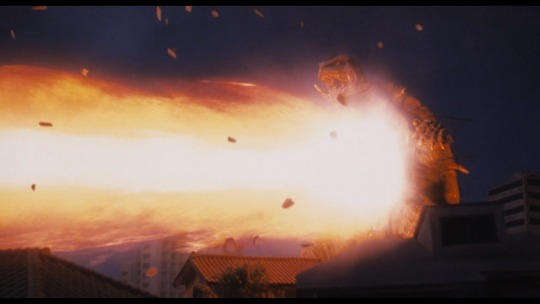

But it looks cool as shit.
In the aftermath, Honami playfully, if ominously, theorizes that maybe Gamera didn’t save humanity so much as all life on earth, and they should be careful to never be seen as a threat.
And that’s pretty much all of Gamera 2’s story, it’s as simple as that. At an hour and thirty-six minutes long, there’s not much to go over, for better or worse.
You may have noticed I didn’t detail the characters the way I usually do, and that’s because I don’t have much to say about them. Midori Honami obviously gets the most focus. She’s very similar in character to Mayumi Nagamine from the previous film, with that sorta plucky go get’em attitude. She’s someone whose knowledge can be applied to the current situation, and her dynamic with the JSDF’s Hanatani (Tamotsu Ishibashi) isn’t that different from Mayumi’s with Yoshinari. It’s a starchy independent 90s woman of science paired with a well meaning military man.
She has a couple of cute moments that reinforce her personality, such as refusing help getting down from a raised platform, but there’s not much to her than that.
As for Hanatani, he has less to work with and I didn’t feel he was worth mentioning much.
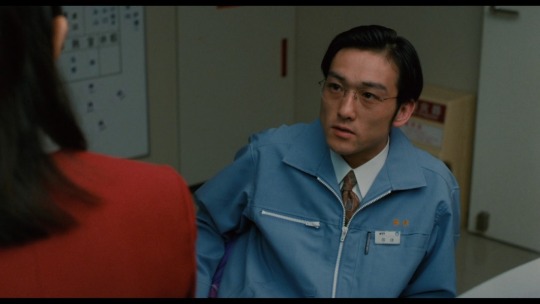
Another character I’ve yet to mention is Obitsu (Mitsuru Fukikoshi) an engineer at NTT (Nippon Telegraph and Telephone) You may recognize Fukikoshi from Ryusoulger, or perhaps Takashi Miike’s Lesson of the Evil. He plays a supporting role here, but he’s probably the most interesting character just for his outside the box thinking. His best moment is near the climax of the film when Gamera is once again swarmed by Legion drones. Obitsu manages to get a power plant to divert a large chunk of their output to a series of nearby transformers, drawing the Legion away and saving Gamera. But that’s about all there is to say.
Like the first film, the monsters are the real stars while the human cast moves the story along. The opening 45 minutes or so are the absolute best story wise. But I also think it’s fair to point out that outside those moments with Legion, most of the story beats are the same as the first film. Mysterious creatures require investigating, a woman of science & military man cross paths to solve said mystery, Gamera gets injured and is incapacitated until the final battle. In a way, it feels like a soft do-over of what the filmmakers wanted previously but couldn’t. So most of the story is repeated with a few original tidbits, and another excuse to prop up the big selling point: the Special effects.
Gamera GOTU had some of the most incredible miniature work at the time, blowing anything of the Heisei Godzilla era out of the water. So when we get to Gamera 2, there was a presumed expectation that they had to up the ante-- and they did.
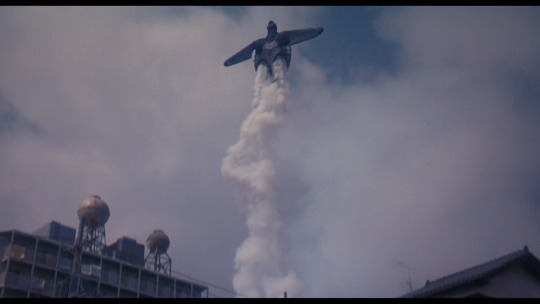
Firstly, the team had much more creative freedom after the surprise success of the first film. Gamera underwent a redesign much more in line with what was originally intended for GOTU; sharper angles, sea turtle fins for a flight mode, and the elbow spikes are now permanently visible. It feels like a proper Heisei era design with all the kinks worked out, in much the same way ‘89 BioGoji is to ‘84 Goji. That’s even seen in the poster at the top, which feels more of the era by emulating Noriyoshi Ohrai’s style rather than a call back to the Showa Era.

The main body was mostly left unchanged, although redesigned dimensionally to better fit Akira Ohashi, taking over from both Manabe and Suzuki from the previous film. The biggest change to the design aside from the sculpt is the mechanical components being improved. Gamera’s eyes are much more expressive, and there’s a wider range of motion for the neck that would move along with Ohashi’s.

Likewise, they were free to incorporate an original monster, by far the best part of the movie. And Legion… What is there even left to say? The Soldiers are great, but the queen is one of the most fascinatingly intricate and unique designs. I have to commend the team for not only the sheer complexity of the aesthetic and size (requiring both Mizuho Yoshida and Toshinori Sasaki to operate) but still making good fight scenes centered around something that’s even more cumbersome than King Ghidorah (Although the soldiers pick up some the slack there)
What’s even more amazing is how much of the suit was being worked on to the last minute, and I don’t mean before shooting. According to designer Fuyuki Shinada, they were constantly modifying the suit throughout, and if you look closely, you can see that the arms gain articulation as the film progresses.
I think you’d be hard pressed to find a review that didn’t hold Legion as the pinnacle of Gamera 2’s assets. Although they’re far from the only highlight, the best visuals are often built around them. The suspense of the brewery attack, the subway scene that makes the soldiers look like they’re on the ceiling, the massive swarm that attacks Gamera. All of that makes 2 stick out from what otherwise would be a too familiar retread, and that care is seen throughout the film. One of the best examples of their love and attention to detail is when the first flower topples over. In just about any other film it would’ve simply fallen and pyrotechnics go off. But we see the roots of the plant tear through the snowy roads, because it would- and it looks amazing, which sums up a lot of the film. It’s just full of little touches like that.

Another would be the first Legion Queen battle. There are wonderful overhead shots of the monsters, Gamera’s shell gets a chunk taken out, but my favorite moment is where Gamera looks at the flower in the distance about to bloom, the camera pans to the flower, and the Legion Queen sidesteps to put herself between the flower and Gamera. So much personality conveyed in a few simple shots.
That said, there is one other area where the films SFX is rough, and that’s the CG…kinda. Frankly I don’t wanna spend too much time on this because A: It’s no worse than Spawn’s released a year later, and B: They only use it when they absolutely need to.
It’s also worth pointing out that Gamera 2 was something of a transitional film for special effects. GOTU used composite and some CGI, while in 2 it’s the opposite, more CGI and almost no composites.

I’m kinda shocked at the stuff they don't use it for. When the hundreds of Legion soldiers crawl up Gamera, that’s CGI, of course. But then it transitions into a practical effect with hundreds of miniatures attached to the suit. Sure, it was probably cheaper than CGI at the time anyway, but it’s incredible that they pulled it off.
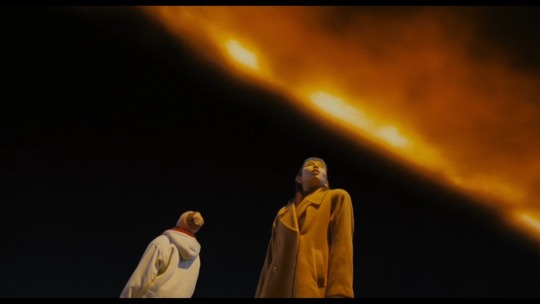
There’s also other areas where the CG is actually really great for the era, such as the light effects. The tone matching upon the Actors sells it.
Honestly, I’m hard pressed to find any fault with the visuals because Gamera 2 is so much more polished than the previous entry. The one major criticism I would hold against the film’s visuals is how many night scenes there are. The first film was a bit more balanced with a slight skew towards day scenes. Here, the only day scene between the monsters in the airport- that’s it. While I do appreciate the contrast, it also makes it difficult to actually see finer details… which might’ve been intentional given the mechanical issues with Legion and the technological angle with CG looking far better in low light. That said, it’s still better lit than most modern modern Hollywood films. I can still see what’s happening.
The fights are more interesting with Legion than Gyaos, scene transitions are better, the snowy environment is fairly unique for this medium and genre. Even the pacing of individual set pieces is better. I can overlook dark environments for all the other positives, which sorta leads into my final overall thoughts.
As much as I notice the flaws more than I did years ago when I first saw G2, it’s still a notable improvement over the first film. Even with some of the repeated character archetypes, it’s hard not to look at G2 as better in almost every other regard. Gamera 1 is by no means a bad film, I heaped a lot of praise on it. But if we compare it to the sequel, well, the first is a hell of a lot more clunky, if more fresh.
Gamera 1 has a lot of moving parts for what it is with the whole Atlantis angle and having to explain Gamera in addition to the Gyaos, his connection to Asagi, the environmental angle, etc. Gamera 1 does a better job with the two main leads, but it’s also much rougher around the edges experience compared to Legion. G2 manages to capture the same mysterious aura the Gyaos had and even more so, while trimming out a lot of the awkwardness. Say what you will about the CGI, it’s aged, but I think that’s more forgivable than some of the opticals in 1 which was simply inexcusable for ‘95. You can tell certain aspects in the first film were rushed due to time, or were too ambitious. While that can make the first film more charming in its own way, G2 curbs many of those problems with the experience gained from the first go.
You also don’t have anything as contrived as not knowing how to get their schoolgirl protagonist to the base of Mt. Fuji for an important scene, so just have a taxi driver manage to break through a military blockade. Everything is just more streamlined and better thought out in this sequel.
It’s not perfect, of course, it sometimes feels like it strokes the JSDF a little too much, bordering on propaganda.

(This Salute and a stand off with a single Legion solider near the climax are perhaps the most embarrassing moments of the movie)
Still, I don’t think you can ask much more from a follow up than working out the kinks and then excelling in nearly all the parts that worked and then some. Gamera 2 is a fantastic sequel that, for whatever flaws it has, is ultimately better than the first and too fun to be down on.
If I am allowed to make a very strange comparison, I would say it’s very much like Evil Dead 2. Sure, it’s basically the same plot as the first one, but everything is refined and has enough cool new shit that it doesn’t matter.
And for the most part, that's how Gamera 2 was received in ‘96. It won a Seiun Award just like its predecessor, and (Controversially) the 17th Nihon SF Taishō Award. But those accolades sadly didn’t translate to ticket sales. While G2 made a respectable ¥700 million, 180 million more than GOTU, G2 had considerably more weight behind it. While I wasn’t able to find any solid numbers on the budget, we do know that it was more than the first, and Gamera 2 was Toho’s Big Summer release for July. By contrast, GOTU was dumped off in March and was considered to not have made as much as possible due to not courting the Theaters. So expectations were high for a sequel to hit the magical ¥1 Billion mark. I would argue that’s a slightly unrealistic goal for a Kaiju film at that time (outside Godzilla and Mothra). But the fact it only made 180 more than a film released in March, and a poorly distributed one at that, is pretty sad if not pathetic.
Nevertheless, the film made money and was critically well received, leading to a third and final entry. But while I won’t be jumping into that just yet, I do want to talk briefly about the legacy Gamera 2 left. I don’t think I can overstate how much Gamera 2 was a major touchstone for the Kaiju Genre. While that’s true for the whole trilogy, and I even touched upon something similar in GOTU in how much the Legendary Monsterverse took from it, I think it’s a bit more poetic here. Gamera 2 is an unabashed love letter to the Ultra series. You can draw a direct line from Ultra Q all the way to Gamera 2.
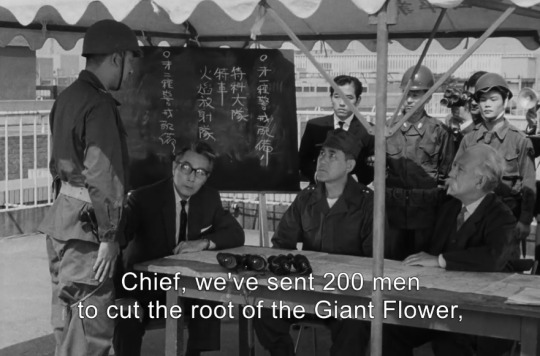
The kids who grew up with Ultraman were themselves becoming the next step in refining Japanese special effects, emulating concepts that were established, but doing them better, and eventually elevating the production standards of the franchise that inspired them.
The entire time I was watching this for the review I kept thinking “This still looks amazing, but TsuPro is able to do the same if not significantly better nowadays” and that’s not a knock, this movie is nearly 27 years old, many of the artists went to work on Ultraman. But it’s also fitting that's how far things have come. Just like how the Ultra series was putting anything from the Godzilla films to shame because of Toho veterans and new blood, and then Gamera was doing better effects work than Heisei Godzilla. Now once again Television productions are far surpassing the level of detail that was once dominant and only possible in theatrical productions. I can see Gamera’s foot crash through a street and a bike topple over along with a phone booth shattering…and I can see the same thing 3-4 times better in an episode Ultraman Z. I think that’s wonderful.
We're not done with the Ultraman comparisons, either. We'll be getting back to those when we get to Iris in Gamera 3.
And for those interested in checking out Gamera 2, annoyingly, it along with G3 were taken down from Tubi just as this was going up (GOTU is still up, oddly)
Gamera 2 is (as of this posting) still available on Amazon Prime, along with the other two films. Of course there’s also a fantastic release by Arrow Video, both a Steel book of the trilogy, and a release containing the trilogy and Gamera The Brave. I highly recommend these sets, particularly the steel book, which tend to be pretty affordable.
As for the next review, well, I had planned on getting to Gamera 3, but getting screen shots is too troublesome at the moment. Of course, the next big thing on everyone's mind is Shin Kamen Rider.
I'm only going so say "We'll see" 7:00 showing on a Wednesdays is far from ideal, even for someone flexible.
Regardless of whatever happens there, perhaps it's time to tackle another series...
11 notes
·
View notes
Text
Ultra Q is magical

Ultra Q is a weird show. And I don't mean that in the way some westerners do when they see something slightly Japanese and say "What drugs were they on???". No. Ultra Q was weird even by (maybe more so by) the standards of tokusatsu media in 1966.
How do you even explain the premise of Ultra Q? A reporter and her two pilot friends repeatedly experience strange phenomena, sometimes manmade, sometimes alien, and sometimes just nature in unbalance, all illustrated through Eiji Tsubaraya's special effects, often reused and modified from past productions.
It feels bizarre to watch Ultra Q removed from its original context. I am not a Japanese child who rushes through their dinner so they can make time to watch this show they've waited all week to see. To watch a show that despite being on a tiny tube TV, had effects that could rival the big-budget theatrical kaiju films of the era. I am instead a 19-year-old Canadian who bought the Blu-ray set, and can watch any episode at any time, all gorgeously and meticulously restored in high definition. Seeing it like this, I am often impressed with the amount of detail and care put into props that would have never shown in its original broadcast, and just as often I laugh at the obvious faults in the special effects that also would not have been noticeable in said original broadcast.
But the thing is, when I step back and look at this through the eyes of its original presentation, I am wowed. I think if I was a child watching this, I would just think that it's real. Seriously. So much effort has clearly been put in to sell this. More so than so many kaiju stories at the time, there's almost always a personal connection in the sci-fi/fantasy elements. Always a person who this story affects personally that we get to see in-depth. It goes a long way to make the unreal feel real. Almost every episode ends with a stinger about how "this could happen to you!". When a mysterious phantom train is taking people to another world in an episode, the narrator tells you to be careful boarding the train at night. There's an episode where Earth gets a warning from an alien guardian. Her people have designated her as Earth's protector and she warns us of a different alien threat. At the end of the story, she decides that she's fallen in love with our planet and our people, and wants to live here permanently. The narrator tells us that many of her people have made the same decision as Earth is a beautiful and peaceful planet. We then cut to a series of shots of people nearby, all wearing the same distinctive shoes as the woman in the episode. I can guarantee you that if I watched that as a kid, not only would I become convinced that aliens live among us, but I would start looking for them the next day. Ultra Q wants you to believe that you live in a beautiful and strange world and that might be my favourite aspect of it.

The amount of creativity on display here is insane. It's always pushing itself to come up with new and creative stories. Some of my favourite episodes here are
Mammoth Flower, a story where a strange plant monster takes root beneath Tokyo and sprouts out to destroy buildings (the main inspiration for the villain in one of my favourite kaiju films Gamera 2: Attack of Legion).
Peguila is Here!, the only episode that doesn't take place in Japan as it sees our protagonists venture to the south pole to meet a woman searching for her missing fiance, the only lead being his journal warning of the monster Peguila.
Space Directive M774, the previously mentioned episode with the alien woman. They get very creative with the ways she communicates with our cast, and the alien threat is a giant stingray which hatches from an egg on the ocean floor. Very cool stuff.
Metamorphosis is another episode that sees a woman searching for her fiance. This time he's been infected by a strange species of butterfly that caused him to grow to a giant size. They have to appeal to his emotion to get him to shrink down.
Open Up!, the series finale. This is about the aforementioned train. It takes away those who are fed up with their lives and wish to escape them. Some realize that they didn't appreciate what they had and leave. Some leave and then come back again because they're the problem in their lives, not other people. One of the few episodes with a real moral message and it's surprisingly complex. It also forces our protagonists to reflect on their lives

My absolute favourite episode of the series is Blazing Glory. A fighter nicknamed Dynamite Joe has been on a spectacular rise in the world of boxing. Throughout it all, he's been caring for his pet alligatorsaurus Peter. Peter has the ability to change size based on temperature, and also telepathically tells Joe the outcome of his matches ahead of time. Before his championship fight Joe disappears and the gang finds him washed up as a clown that performs at a motel, drinking himself away in shame. Peter had told him that in the championship he would be knocked out in the third round. They fail to convince him to return to boxing, but eventually, Peter breaks loose, starting a large fire and disappearing from Joe's life. After his near-death experience and loss of Peter, Joe decides to return to boxing. He realizes that knowing the outcome of every match killed his ambition to better himself, and the true beauty of life comes from its unpredictability. For me, this is Ultra Q at its best. It pushes the envelope to tell new and exciting stories with its medium that try and make you believe in a wild and wonderful world. It's truly a show that has never been truly replicated, partially because of the wild success of Ultraman, but also just because it is a one-of-a-kind joyous celebration of Eiji Tsubaraya's life and career.
9 notes
·
View notes
Photo




Gamera 2: Attack of Legion (1996)
1 note
·
View note